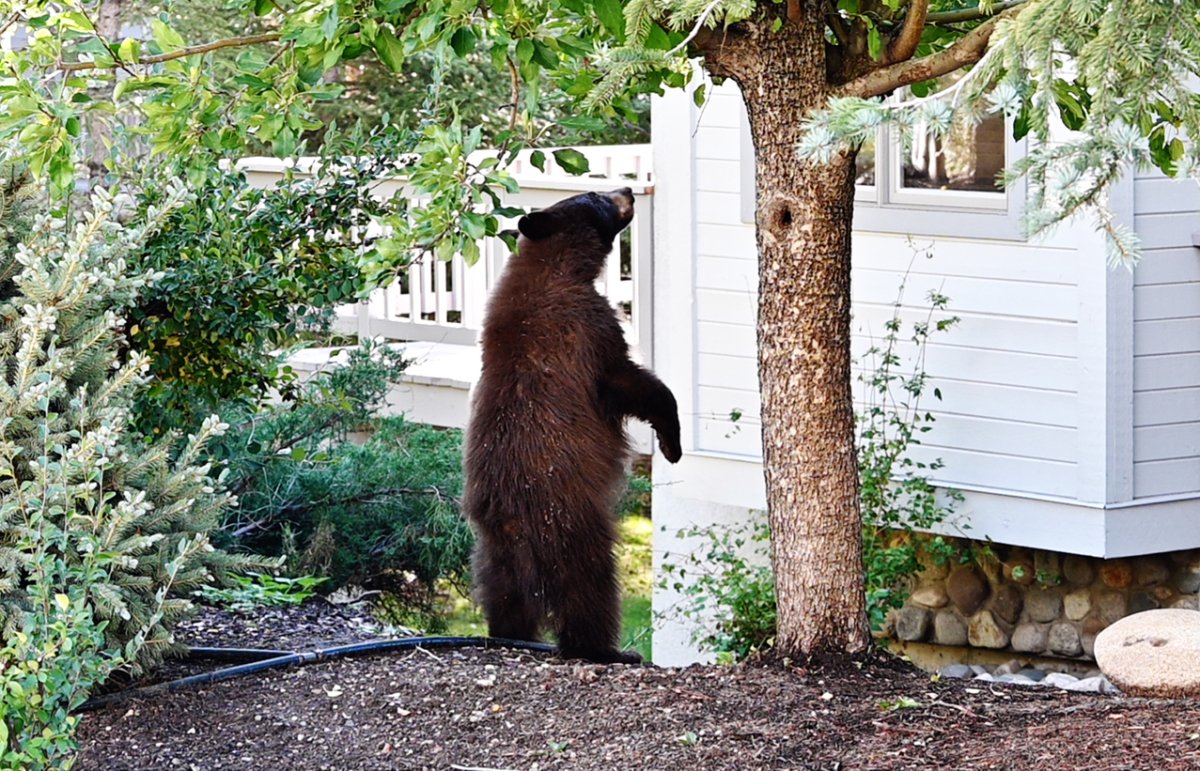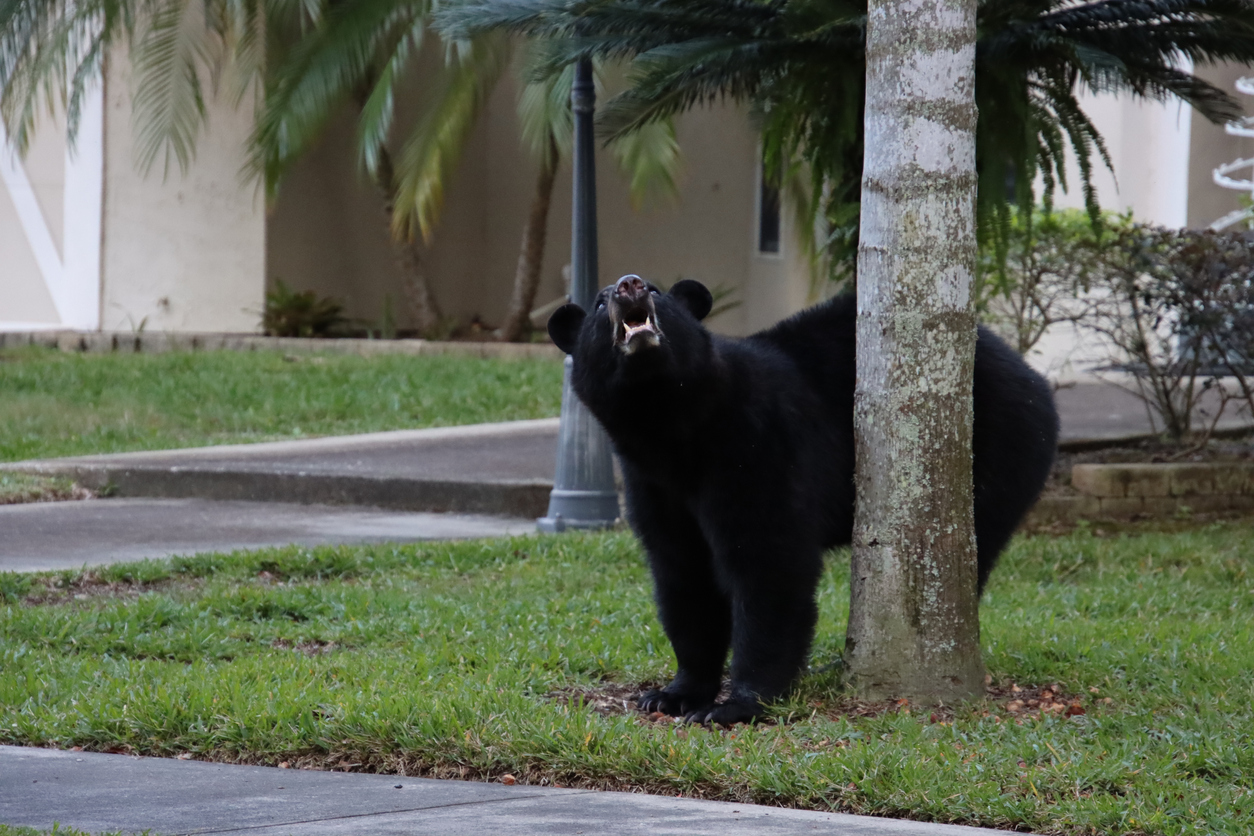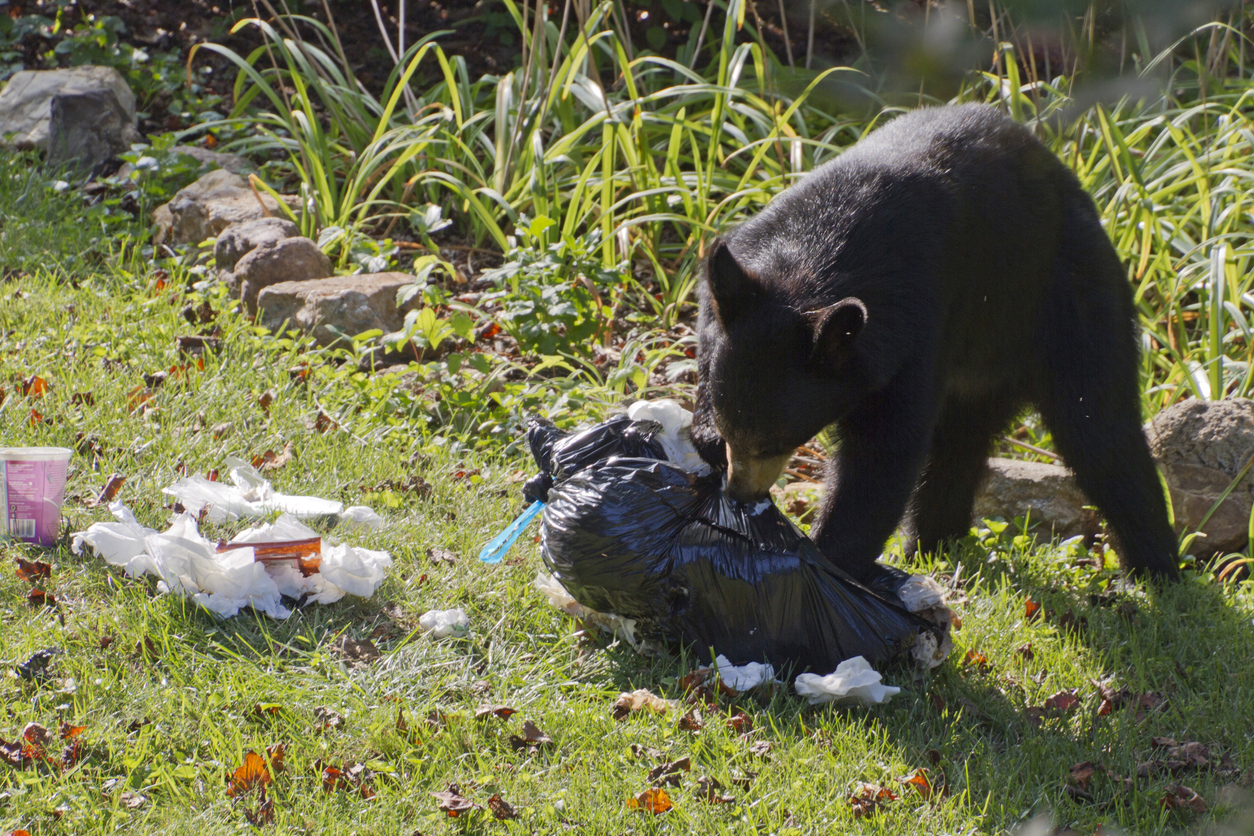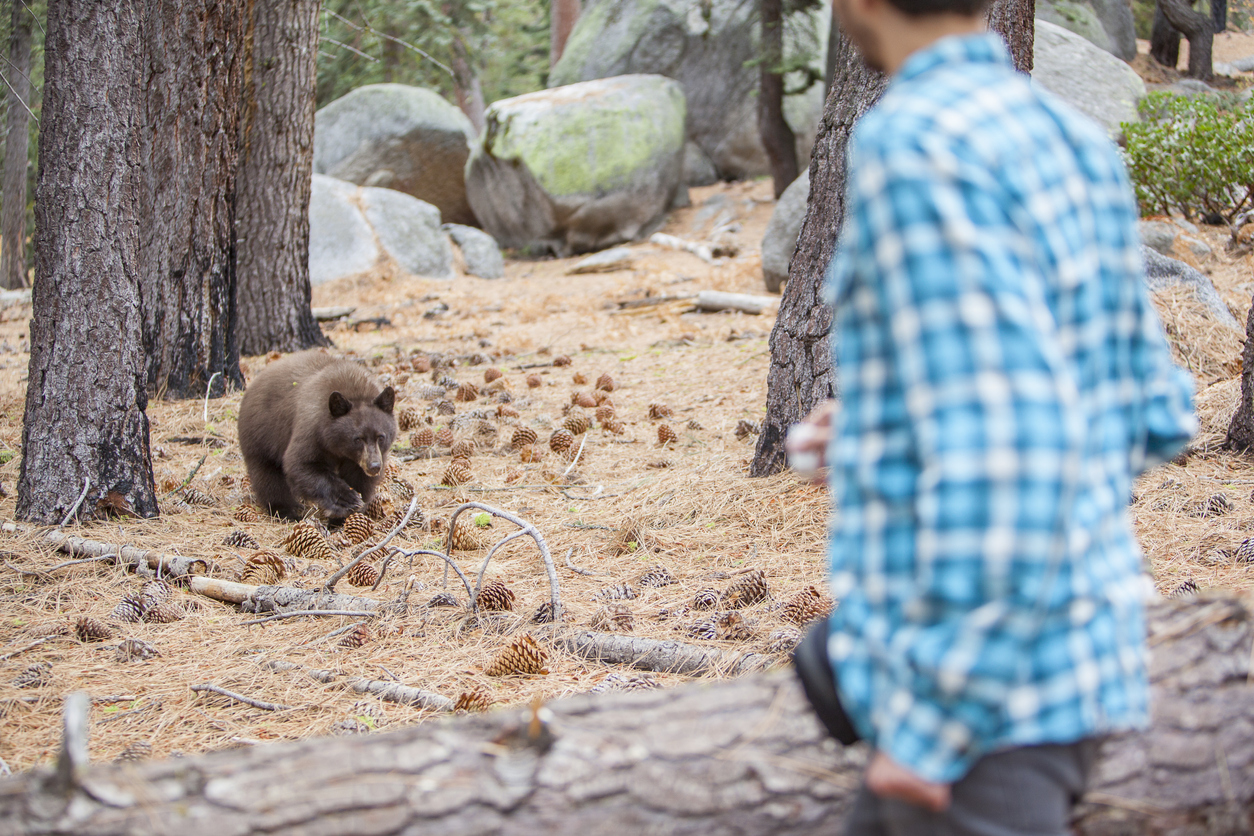

We may earn revenue from the products available on this page and participate in affiliate programs. Learn More ›
First came Pizza Rat, quickly succeeded by Taco Squirrel. Then—faster than you can say “trending hashtags”—more unlikely animal influencers grabbed their share of the social media spotlight: Doughnut Raccoon, Bagel Pigeon, and Hennessey Rat.
The latest pretender to the Animals Enjoying Discarded Human Food throne? Cupcake Bear.
In May 2023, the good people of Avon, Conn., watched in fascination, if not in fear, as a large black bear decided to march in the town’s Memorial Day parade—just a few days after Cupcake Bear made his social-media debut by swiping some 60 sweet treats from a local bakery. No one knows for sure whether the parade participant and the cupcake klepto are the same bear, but residents of Avon, and Connecticut in general, are all too aware that they have a bear problem.
According to the state’s Department of Energy and Environmental Protection (DEEP), some 67 brave bears barged into Connecticut houses in 2022. That’s a dramatic increase from 2014, when unwanted ursine visits numbered fewer than 10. Why the uptick? And what can homeowners do to protect their property and family?
Bears in Our Backyards

If a bear can plod, unperturbed, right down a parade route amidst hundreds of people, it’s no surprise that they will enter our private spaces—our backyards and even our homes—with aplomb. Viral videos and puff-piece nightly news reports, errr, bear out this supposition. What’s more, while bear country once comprised only a few regions like Alaska, the Pacific Northwest, the Rocky Mountains, New England, and the Appalachian Mountains, bear populations are now much more well-traveled and widespread.
Of the eight species of bears, only three are native to North America: black bears (Ursus Americanus), polar bears (Ursus maritimus), and brown bears (Ursus arctos), which includes grizzlies and Kodiaks.
Black bears, by far the most common in the contiguous United States, have recently been spotted in some very populated places: Burbank, the ‘burbs of both Chicago and Atlanta, Washington D.C., St. Louis, and many more atypical areas. Bears still prefer woodlands and rural locations, but as our suburbs sprawl further from cities, humans increasingly encroach on their territory. The opposite is true, too—as bears become habituated to humans, they also become braver about crashing a backyard BBQ (or at least returning under cover of darkness to plunder the wreckage).
RELATED: 10 Smart Solutions for Keeping Animals Out of the Garden Without Harming Them
Make Your Home Inhospitable to Bears

Like the unfairly profiled opossum, not to mention subway-dwelling, pepperoni-loving urban vermin, black bears are essentially opportunistic. For them, to see a pic-a-nic basket is to seize a pic-a-nic basket; ditto bird feeders, fruit trees, and recent contributions to compost piles. We don’t have a bear problem, conservationists posit; we have a people problem. To that end, make your property as inhospitable as possible:
- Secure anything a bear might consider food: birdseed, kibble, compost, or garbage.
- Keep garbage cans, recycling bins, and grills/smokers clean
- Don’t store any food or items with food debris in sheds or on screened porches. Keep them in the home or garage.
- Buy or make bear-resistant trash receptacles.
- Don’t place meat, fruit, or even fruit peels in the compost.
- Take trash to the curb as close as possible to pickup time, not the night before.
- Cover ponds, pools, hot tubs, and any other backyard bodies of water.
- Consider installing an electric fence, especially if you have chickens or other backyard livestock that bears might consider a tempting snack.
Anyone who’s gone camping in bear-heavy areas knows what elaborate steps must be taken to deter these furry burglars. For some people, safety now depends on implementing such precautions at home, too.
RELATED: How Much Does Wildlife Removal Cost?
What To Do When You Encounter A Bear

Luckily for those of us who would rather not be mauled defending the remnants of our watermelon fruit bowl or strawberry pie, black bears are the least dangerous ursine denizens of North America. That said, neither are they unilaterally, predictably harmless.
Viral videos of Cupcake Bear and his compatriots are often posted with captions calling the animals “cute,” “harmless,” “curious,” and invariably “more afraid of us than we are of them.” Perhaps due to pop culture’s plethora of adorable, often hapless bears—Yogi and Boo Boo, Baloo, Winnie-the-Pooh, Paddington, the Care Bears, the scatalogically minded, oddly Technicolor Charmin Bears—humans sometimes underestimate the potential danger that these decidedly wild animals present.
RELATED: 12 Ways to Predict the Weather by Watching Nature in Your Backyard

Bears aren’t necessarily the laconic, lumbering beasts of cartoons; they can sprint at speeds up to 35 mph, downhill and uphill. Ursus americanus sports claws that can be 2 inches long. If they feel threatened, they may very well attack. Here’s how to handle a bear should you meet one, whether in the woods or wandering up to your backyard gazebo.
Be human. First, know that bears generally avoid people. While on a hike, make plenty of noise—sing, shout, talk, clang your carabiner against your water bottle. Explore in groups if possible; united, you emit more smells and sounds, thereby telegraphing your human status.
Speak firmly. Using a low-pitched but strong voice, tell the bear to get lost, go away, scram, scat… the actual words don’t matter as much as your take-charge tone.
Don’t scream or squeal. High-pitched, panicky noises can make you sound like music to a hungry bear’s ears—i.e., prey.
Look big. Wave your arms above your head. Get to elevated ground if you can (or stand on your pic-a-nic table). Do not climb a tree, lest the bear clamber right up after you.
Don’t flee. The bear may stand up to get a better look at you, or may approach slowly to catch your scent—it’s determining whether you are prey. If you turn and run, you remove all doubt. Bears, like dogs, will give chase.
Move slowly. If the bear is stationary, stay facing forward and step cautiously to the side or backward. Continue giving it as wide a berth as possible until you reach safety or see the bear retreat.
Don’t throw anything. Tossing granola bars or sandwiches at a bear might seem like a smart way to distract it so that you can escape, but feeding a bear may trigger it to ask for seconds (read: approach you). Similarly, throwing a water bottle or rock could be interpreted as a threat or as engagement.
Observe carefully. This probably goes without saying, but keep your eye on the bear (without making eye contact, which could feel threatening). It might display aggressive behaviors like baring its teeth or claws, swinging its head back and forth, making huffing or snorting or barking sounds, swatting at the ground, or flattening its ears. These behaviors are not signs of an imminent attack. Rather, they are defensive actions, indicating that the bear is stressed and essentially asking you to back off.
RELATED: What Animal Is Digging Holes in My Yard? 9 Types of Bothersome Burrowers
